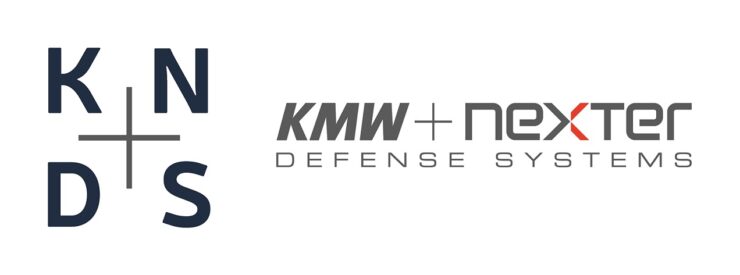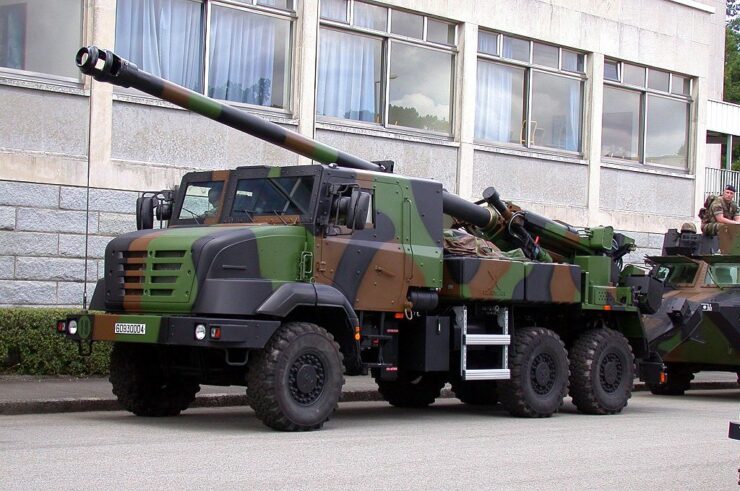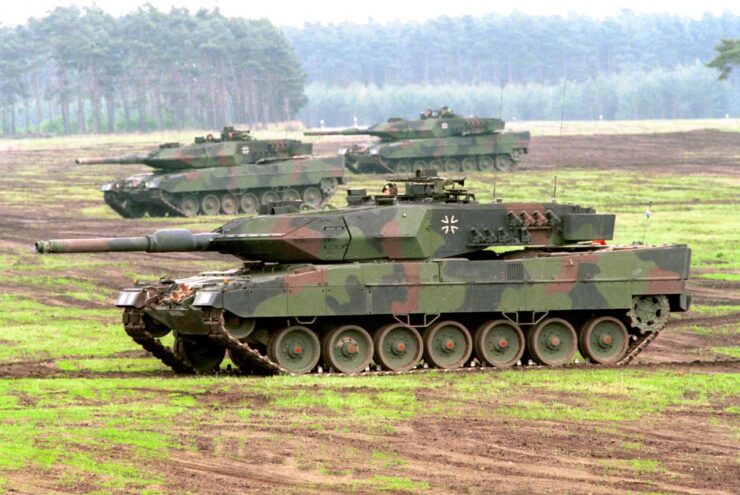
KNDS, the Franco-German company specialised in military hardware, was an unusual configuration from the onset. The hybrid defence firm was formed by an entirely private business German KMW and Nexter, initially a state-run but later shifted into a purely private firm, quickly consolidating success. As such, it is finally giving Europe what it long failed to achieve: a fighting chance on the global market and the ability to ensure its own sovereignty. But some challenges are still to come
A hefty backlog
A small but nimble fighter
KNDS is still far from the largest player in the field, with a mere 7,700 employees striving together – a modest figure, facing some of its competitors. For instance, Rheinmetall, albeit one of KNDS’ subcontractors in some programmes, has a 23,000-heavy payroll. Its financial backing is also not the largest: while many defence procurement firms used to be State-owned (which implied unlimited financial support), and many are now entirely privately run (with immense liquidity injections from the stock market), KNDS opted for a purely private nature, but with 50 per cent of shares owned by the French government, as a regular private shareholder.
And yet, despite this unusual configuration and a lean figure, KNDS is achieving results which place it on par with its global competitors. General Dynamics Combat Systems, all markets considered and therefore with a far larger perimeter, achieves a revenue of around six billion euros with over 1,00,000 employees. KNDS, despite being young, is more focused on its market and “only” 7,000 employees achieve nearly half that performance one might expect from one of the largest industrial groups in the world to achieve better synergies and optimisations. The Franco-German company seems to have found the way to fight the big players on an equal foot.
A large order log at both home front and abroad
KNDS has achieved the billion-euro revenue milestone, in the defence segment alone. Other players, such as Rheinmetall and General Dynamics, have achieved similar results in the same market segment. The order log, which spreads throughout the next decade, forecasts an additional 7.7 billion euros of revenue. The share of business brought to the venture by Nexter is substantial, through its contracts with the French government and export sales (namely with Morocco, Belgium and the Czech Republic). This could be seen as point of imbalance by investors, in favour of the French, but German interests will quickly identify the strategic and commercial benefits which they could draw from increased investment into the partnership.
Will KNDS be able to absorb such a hefty order log in its current configuration, or will it have to pursue its development and acquisition strategy? It must be noted that in order to put KNDS’ results in perspective that part of these orders “fell out of the sky”, thanks to Nexter’s relationship with the French government such as orders from Belgium, which is politically very connected to France. The United States, despite its state-of-the-art defence industry, turned to KNDS for several of its products. KNDS’ flagship and proprietary products are the CTA 40 ammunition, and the BONUS artillery shell. These howitzer shells, which proved more reliable than the German SMART shells and can pinpoint their targets accurately, over a large area, have been used extensively in Iraq.
Finding the right distance with the State
A successful transition from public to private sectors
Nexter is one of the few weapons industries, which was successfully privatised. Once an entirely State-run and State-owned industry, under the name of GIAT, the entire firm changed its stance gradually between 1990 and 2006. The firm thus became a private company with public capital and, moreover, overhauled its entire management systems to make State-run unwieldiness and sloth a thing of the past. In this perspective, its privatisation was officially achieved in 2015 when all of its capital was transferred to KNDS; an entirely private company, with 50 per cent of state-owned shares. Similar attempts were made, in other European countries, but with considerably unhappier outcomes. The Royal ordnance factories were also privatised in the 1990s, but this led to loss of competitiveness and know-how.
BAE Systems acquired many divisions after the 1987 bout of privatisations, only for Rheinmetall to take them over 30 years later, when they had all but disappeared from the global scene, with BAE caught in an endless string of lost RFPs. Today, only the American branch of BAE Land Systems is developing successfully, thanks to the US’ behemoth defense budget. In other words, privatisation does not automatically lead to increased competitiveness and industrial success. However, Nexter did go through its own share of rough patches, some of which required the French State to recapitalise the firm. Here again, recapitalisation is a dangerous game, which can lead stakeholders to assume they have a blank check – but Nexter repositioned itself successfully under the new leadership of Luc Vigneron and turned around towards success.
Necessary proximity with – and sufficient distance from – the French State
KNDS State stakeholding and shareholding yield certain advantages, the main of which being support in foreign sales. In many cases, State to State negotiations will lead to armament contracts, which KNDS can acquire. This opportunity is not specific to KNDS, it benefits all nations with defense industries. For instance, Morocco, despite usually turning to the most advanced firms for defense equipment, recently turned to lower-tier Spanish Navantia shipyards, as a diplomatic measure to cool down tensions between the Mediterranean States. France’s national influence is, of course, a major commercial asset for KNDS. Germany’s influence is equally too, in this matter.
Validating specs and capitalising on experience
There is an asset that the French side brings to the table, which the Germans lack: a thumb on the pulse of military affairs. France has long set up a large and rich network in which engineers and military operators can freely exchange ideas, feedback and solutions. GICAT, the DGA, and countless think tanks are just a few forms of embodiment of this long-term policy. France has extensive military experience and is involved in virtually every multilateral military operation. Even while programmes are being developed, pragmatic interactions between the thinkers and the doers ensure that design and development is actually on target.
A purely private day-to-day management and market-orientation
KNDS entirely owns Nexter, and 50 per cent of its shares are owned by the French government. KMW, on the other hand, an old-school and strictly private German company, has a purely private stance on affairs and considered Nexter to be “private enough” to freely associate with it. The company is run the way any private firm would be, with competitiveness and market relevance at the top of priorities. The State’s presence is used to ensure that the joint venture doesn’t slip into irrelevance, by letting short-term commercial interests take the front of the scene, at the expense of performance or relevance. The State holds only two votes on KNDS’ board.
The additional tricky challenge of balancing ambitions and performance
Achieving performance is nowhere more difficult than in the defence world. Relevance and know-how may be crucial but in no way are they sufficient. A complex formula of industrial excellence, research and development, financial balance, extensive networks of carefully nurtured contacts with suppliers and customers, interactions with stakeholders, and so on, must be built and kept if ambitions are to be achieved.

In many cases (see above) have commercial ambitions lead to short-term profit seeking and eventual dismemberment of industries. Likewise, piling up technical skills will not lead to properly-designed equipment, if subcontractors are not adequately coordinated. Failure to integrate suppliers correctly led, for instance, to an embarrassing mishap for the Spanish navy. KNDS focuses therefore not only on producing its own technical value, but also on being a reliable systems integrator, thus guaranteeing the end result for customers.
A unique stance towards innovation
Unlike most defence contractors, who place the risk of innovation on their customers by negotiating development contracts, KNDS develops new equipment on its own funds. The “French part” of KNDS, Nexter, dedicates a staggering 16 per cent of revenue to research. By order of comparison, Finnish Patria (also owned 50 per cent by its government) dedicates only two (2) per cent, despite a far more specialised market segment.
The Titus Infantry Vehicle (IFV), for instance, was entirely funded in its development by Nexter. The same went for the new-generation hyper-mobile howitzer system, the 8×8 Caesar artillery truck. KMW also developed the Armoured Multi-Purpose Vehicle, on a brave industrial gamble. KNDS trusts in its ability to identify its clients’ need adequately, thanks to its extensive network, and customers are thus guaranteed to make optimal use of their defence budgets by paying only for what they actually acquire.
Focusing on the historical area of expertise: cannons and ammunition
The deeply-rooted changes which have occurred posed a risk: that of letting past-acquired expertise slip out of sight. Historically, there has been a long tradition of cannon expertise in Europe. KNDS was careful enough not to lose ground on that track, and is still ahead in the race. For instance, despite fierce competition in this market, and prohibitive development costs, KNDS has produced game-changing ammunition such as the CTA 40, which enables AFVs and IFVs to increase their range, power, versatility, accuracy and performance facing modern threats. Additionally, the new ammunition reduces weight and payload volume, all at once, enticing American forces to consider acquiring it.
A first-ever systems architect in Europe
Most defence industries in Europe simply produce equipment. This equipment may be very advanced, and their worth is not to be diminished, but it still remains equipment production – technical skill, of sorts. As seen above, capacity to build high-tech pieces of kit is utterly insufficient when it comes to helping a nation reinforce sovereignty, a task which can only be achieved with an integrator. As highlighted earlier, armament programmes have become so complex that coordination between program participants becomes paramount, lest all the technical value be lost into oblivion.
GDELS (General Dynamics) recently paid a high price for having forgotten this, when its contract with the Spanish Army was rescinded, for lack of control over economic costs and technical integration. In other words, knowing how to build good systems is not enough; they must be coherently assembled by the integrator. In order to achieve this capacity to integrate “systems of systems”, industrial leadership must be achieved; something European firms had failed to do, throughout their history. KNDS is successfully integrating programs, and coordinating its numerous subcontractors, domestic or foreign, and finally tackling Europe’s old plague: industrial fragmentation. The French Army’s Scorpion program embodies this achievement, by producing a new network-centric defence programme, which rallies countless partners, from extremely varied fields of expertise.
KMW is no smaller contributor to KNDS
KNDS without its German-ness would make no sense. The German inputs are integral to the new company, and not only financially. KMW’s expertise is complementary to Nexter’s and Germany has state-of-the-art industrial excellence – an essential part of the KNDS value proposition. The MGCS programme is a major project, launched by both the French and German defence ministries, and owes much of its value to KMW’s mobility technology. KMW, which initially built locomotives in the 19th century, has been expanding its technology since, and is now the cornerstone of armoured mobility in Europe. KNDS plays a critical role in matching the needs of both armies, namely with its unique equipment. The duo’s command of turret, ammunition and armoured mobility, in addition to their aforementioned ability to integrate (illustrated by the Scorpion system) make for the programme’s heightened chances of success.

Truth be told, few would have given this umpteenth attempt to modernise Europe’s defence industry, when it started. The fragmentation dilemma had long been known by all market observers, and all attempts to address it were derailed by political misalignments, commercial ambitions, governmental irrelevance on markets and inadequate industrial policies. As it seems to turn out, no one European country could indeed take leadership in the European defence world. But the fact that two countries had to unite their industrial forces matters little: what matters is that Europe now has what it needs to play on the global field.
-The writer is a defence and security industry consultant having varied experience working with medium and large companies majorly in European market. The views expressed are personal and do not necessarily reflect the views of Raksha Anirveda








